
Every houseplant owner knows that losing plants is part of the learning curve, but so is experimentation - so why not try and revive a seemingly completely dried-out plant? After all, there’s no harm in trying!
The thing is, most houseplants are extremely resilient to inhabitable conditions. Even when you forget to water the plant once or twice, leave it under the scorching sun, and it loses nearly all of its leaves, you may still be able to revive it. As long as the roots and parts of the stem haven’t been affected, your attempt at nurturing back the plant has a good chance of success.
Want to try and resuscitate a dried-out plant? Here’s your step-by-step guide.

Saving a plant is made a lot more difficult when you don’t know what’s wrong with it. To find the underlying cause, begin by checking the plant for pests: turn the leaves and look underneath them, and examine the area where the stem meets the leaf petiole. Many plant pests suck out the moisture from leaves and give them that dry, underwatered look.
If you find nothing, think: what could have happened to the houseplant recently? Underwatering is an obvious possible cause, for example. When this happens, the soil of the houseplant will be dry and sandy, and the plant may appear wilted and have several dry leaves.
Other possible causes may include weather changes or even overwatering. The latter makes roots prone to rotting and makes houseplants die of thirst.

When it comes to houseplants, “dried out” is a relative term. Even if your plant looks like it’s long gone, you might still be able to revive it. If there’s any green left on the stem of the plant, you may still be able to save it. In fact, many plants can recover even if they lost all leaves or have few healthy roots.
Speaking of roots, make sure to check the roots of the houseplant. Pop the plant out of the pot and examine the root system. “Healthy roots should appear plump and be white to tan in color with white tips,” pointed out Jennifer Morganthaler, an agriculture instructor at Missouri State University to Reader’s Digest. If you notice any mushy, brown, or black roots, you’re dealing with root rot - these must be removed with disinfected tools, and the remaining roots must be dried out for an hour or two in shade and treated with a fungicide.
So, your plant’s remaining leaves are wilted and dry, and the soil of the plant looks powdery and pulled away from the sides of the pot; it seems that you’ve either underwatered your plant or left it in too much sun.
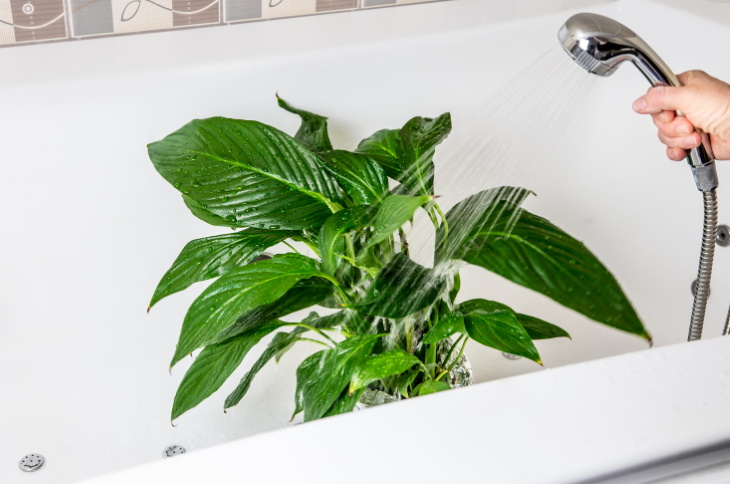
The remedy is, of course, water, but you have to be careful not to overwater the plant now, as it’s very susceptible to stress and disease. The easiest way to cool down and water a plant that has dried out is by placing the pot in a sink, bathtub, or basin and showering the soil thoroughly with cool water for several minutes. Just make sure to use a weak stream of water to prevent soil loss. Then let the plant sit in the bathtub for an hour or two. This way, any excess water will be drained out, and your plant’s leaves and root system will have cooled down.
Note that this only works for pots with drainage holes, as the idea is to fully saturate the soil but prevent it from getting soggy.
Using this method, you’ll notice that your plant looks a lot livelier the following day. From there, make sure to water your plant regularly and more often. When watering, get all edges of the pot and continue adding more until water starts continuously streaming out of the drainage hole. This way, you’ll make sure that all of the soil is thoroughly hydrated.
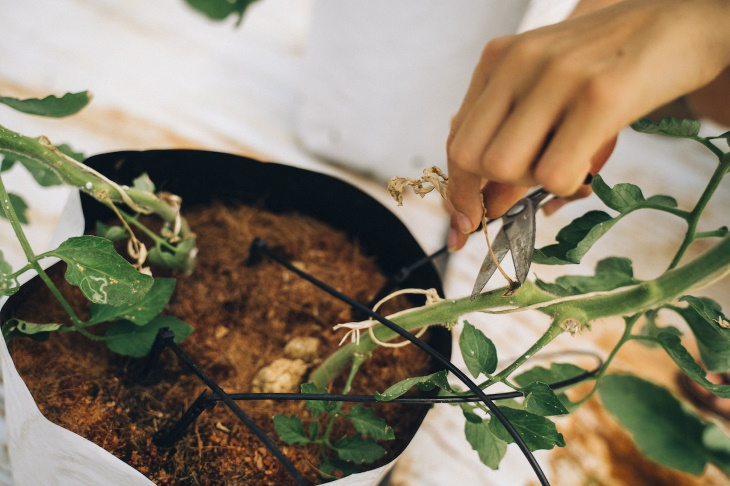
A few days have passed since you’ve watered your dry plant, but some of the leaves are not looking perky. Leaves and stems that look like they’ve completely dried out or turned fully yellow will not come back, and you need to trim them off.
Even though some leaves will come off easily after a gentle tug, others may be more persistent. So take a pair of clean scissors or gardening shears, and carefully cut them off. After each chop, I usually rub the shears with a paper towel soaked in rubbing alcohol to disinfect the blades and prevent the spread of pests and diseases.
If all of the stems appear dead, we’d recommend leaving at least 2 or more inches of them to leave space for new stems to sprout in the future.
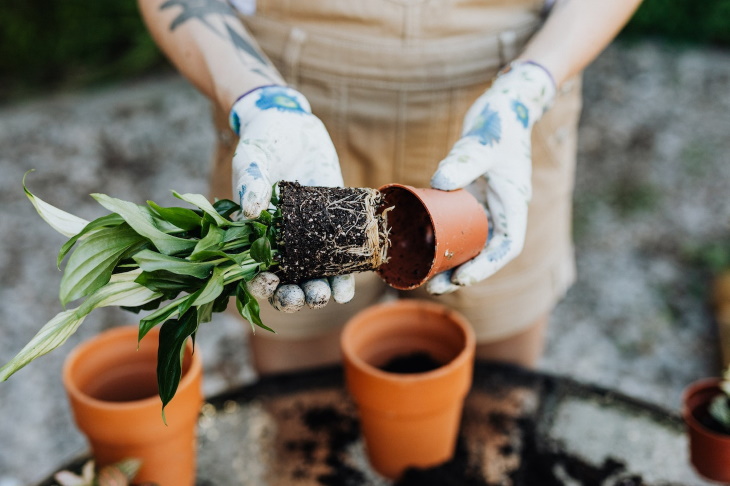
Sometimes, the cause of the problem is very difficult to spot. A plant that has been thriving in a specific location for months is suddenly looking limp and dried out and no amount of care or regular watering can help. For mystery cases like these, repotting is your best bet.
As you remove the plant from its current pot, you may even find that the roots are rotting or the soil looks moldy in some spots. If this is the case, you found the culprit. To fix the issue, scroll up to Section 2 above and follow the tips on getting rid of root rot before repotting the plant. Then discard all of the potting soil, wash and disinfect the pot with a bleach and water solution, and repot the plant in fresh potting mix.
If not, the plant may have just grown out of its current pot or it needs new soil. In this case, only the older leaves tend to dry out and fall off - this is your plant trying to take away energy from old leaves to continue growing. To remedy this issue, simply transfer the plant to a pot that’s one size larger in fresh potting mix.
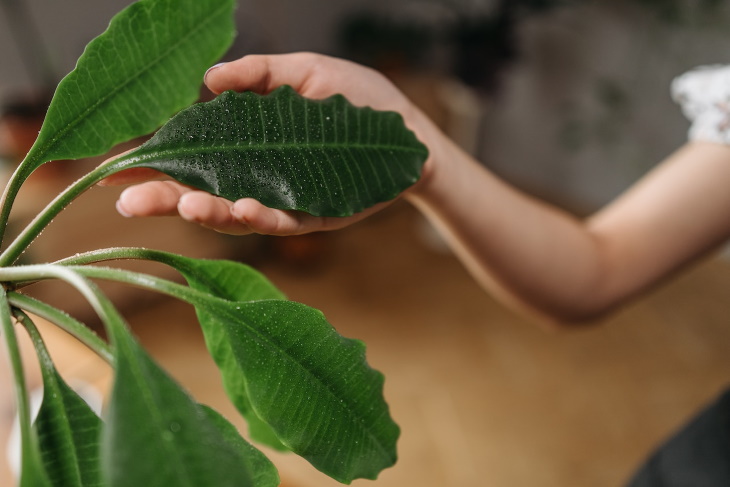
After soaking your dried-out plant in water or repotting it, place it in a slightly shadier area. This will leave the soil damp for a bit longer and give the roots a chance to recover and rehydrate your plant. Even light-loving plants, like succulents or palm trees, tend to recover faster if you leave them in indirect sunlight for a few days.
Once you see that the plant has perked up a bit and settled after the shock of drying out and repotting, you can return it to a sunnier location.
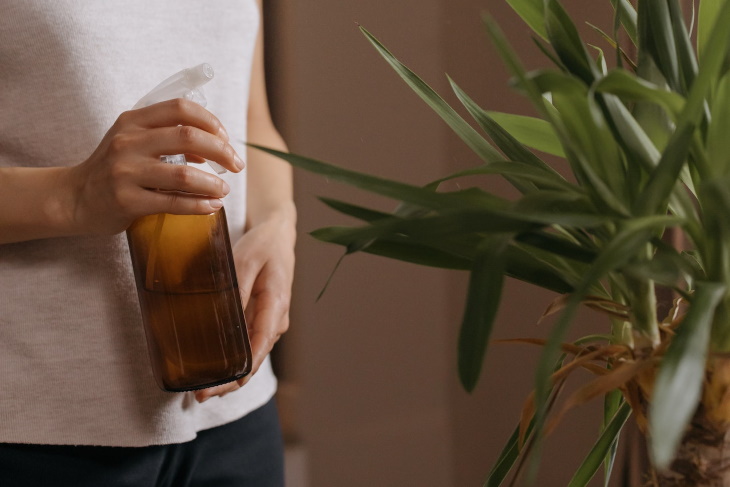
Many of the houseplants we love to grow indoors come from the tropics, where it’s hot and humid. Although many plant cultivars were bred to be more resistant to dry indoor conditions, some houseplants may still crave that extra hydration. And they will communicate this to you through the appearance of their leaves: if the humidity is too low, the leaves will start browning at the tips, folding, shriveling, or wilting.
To give your plants more humidity, make sure that the plant is not sitting next to an air conditioner, heater, or open window, as this may be too dry for the houseplant. You can also move the plant to a location with more humidity, such as the bathroom or near the kitchen sink. There are several other ways to raise humidity for your plants too; find them here - Increasing Humidity for Your Houseplants.
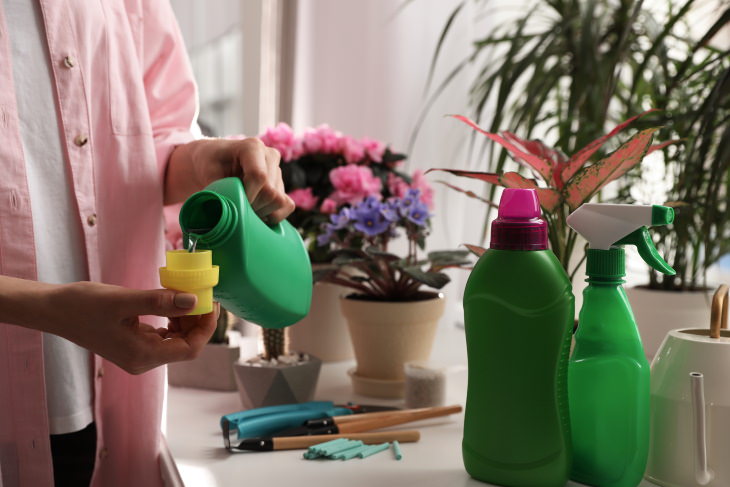
Drought-stressed plants must be fertilized very carefully and lightly using a liquid fertilizer diluted twice as much as recommended on the bottle. Just keep in mind that plants that have been fertilized should be watered slightly more often. To find out how much is right, water the plant a little and often, and dump out any water accumulating in the dish.
However, fertilizing a plant that just lost plenty of leaves is definitely important. All the nutrients will help re-grow lost leaves, stems, and roots more rapidly.
If you’ve repotted the plant, you can also add some compost into the potting mix as fertilizer. Any harsh chemicals can do more harm than good.
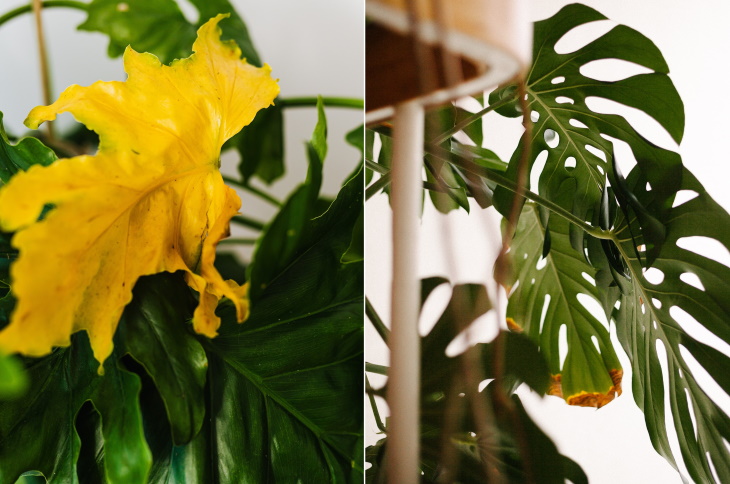
After all the work you’ve done to revive your plant, now is the time to sit tight and observe. The rest is entirely up to the houseplant itself. As long as you keep up with a regular and optimal watering schedule for your houseplant, you should start seeing new shoots appear in the soil and new leaves unfurling from the stem within a month. Of course, it all depends on the species of the plant too, so be patient.
Don’t be discouraged if the first few new shoots are very small and pale green. This is normal for a stressed plant, the energy levels of which have dropped and dropped with every lost leaf and stem. Treat the stressed plant as a seedling, shading it from direct sun and watering it regularly, and you should see your plant coming back to life over time. And when it does, you’ll love watching every minute of it; there’s no feeling more satisfying than watching that once-struggling plant thrive and grow.
H/T: Reader's Digest, Houseplantscorner.com, Gardeningknowhow.com